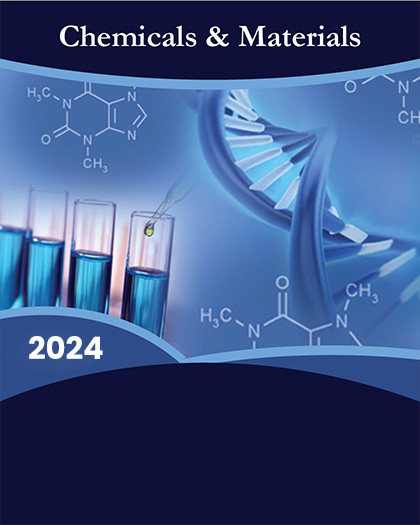Table of Contents
Chapter 1. Global Bio-based Aromatics Market Executive Summary
1.1. Global Bio-based Aromatics Market Size & Forecast (2022-2032)
1.2. Regional Summary
1.3. Segmental Summary
1.3.1. By Type
1.3.2. By End-use
1.4. Key Trends
1.5. Recession Impact
1.6. Analyst Recommendation & Conclusion
Chapter 2. Global Bio-based Aromatics Market Definition and Research Assumptions
2.1. Research Objective
2.2. Market Definition
2.3. Research Assumptions
2.3.1. Inclusion & Exclusion
2.3.2. Limitations
2.3.3. Supply Side Analysis
2.3.3.1. Availability
2.3.3.2. Infrastructure
2.3.3.3. Regulatory Environment
2.3.3.4. Market Competition
2.3.3.5. Economic Viability (Consumer's Perspective)
2.3.4. Demand Side Analysis
2.3.4.1. Regulatory frameworks
2.3.4.2. Technological Advancements
2.3.4.3. Environmental Considerations
2.3.4.4. Consumer Awareness & Acceptance
2.4. Estimation Methodology
2.5. Years Considered for the Study
2.6. Currency Conversion Rates
Chapter 3. Global Bio-based Aromatics Market Dynamics
3.1. Market Drivers
3.1.1. Increase in Consumer Preference for Sustainable Products
3.1.2. Growth in Demand from End-use Industries
3.2. Market Challenges
3.2.1. Economic Uncertainty and High Production Costs
3.3. Market Opportunities
3.3.1. Technological Advancements in Production Processes
3.3.2. Regulatory Support and Incentives
Chapter 4. Global Bio-based Aromatics Market Industry Analysis
4.1. Porter's 5 Force Model
4.1.1. Bargaining Power of Suppliers
4.1.2. Bargaining Power of Buyers
4.1.3. Threat of New Entrants
4.1.4. Threat of Substitutes
4.1.5. Competitive Rivalry
4.1.6. Futuristic Approach to Porter's 5 Force Model
4.1.7. Porter's 5 Force Impact Analysis
4.2. PESTEL Analysis
4.2.1. Political
4.2.2. Economical
4.2.3. Social
4.2.4. Technological
4.2.5. Environmental
4.2.6. Legal
4.3. Top Investment Opportunity
4.4. Top Winning Strategies
4.5. Disruptive Trends
4.6. Industry Expert Perspective
4.7. Analyst Recommendation & Conclusion
Chapter 5. Global Bio-based Aromatics Market Size & Forecasts by Type 2022-2032
5.1. Segment Dashboard
5.2. Global Bio-based Aromatics Market: Type Revenue Trend Analysis, 2022 & 2032(USD Billion)
5.2.1. Benzene
5.2.2. Toluene
5.2.3. Xylene
5.2.4. Styrene
5.2.5. Phenol
5.2.6. Others
Chapter 6. Global Bio-based Aromatics Market Size & Forecasts by End-use 2022-2032
6.1. Segment Dashboard
6.2. Global Bio-based Aromatics Market: End-use Revenue Trend Analysis, 2022 & 2032(USD Billion)
6.2.1. Chemicals
6.2.2. Food & Beverages
6.2.3. Pharmaceuticals
6.2.4. Personal Care & Consumer
6.2.5. Others
Chapter 7. Global Bio-based Aromatics Market Size & Forecasts by Region 2022-2032
7.1. North America Bio-based Aromatics Market
7.1.1. U.S. Bio-based Aromatics Market
7.1.1.1. Type breakdown size & forecasts, 2022-2032
7.1.1.2. End-use breakdown size & forecasts, 2022-2032
7.1.2. Canada Bio-based Aromatics Market
7.2. Europe Bio-based Aromatics Market
7.2.1. UK Bio-based Aromatics Market
7.2.2. Germany Bio-based Aromatics Market
7.2.3. France Bio-based Aromatics Market
7.2.4. Spain Bio-based Aromatics Market
7.2.5. Italy Bio-based Aromatics Market
7.2.6. Rest of Europe Bio-based Aromatics Market
7.3. Asia-Pacific Bio-based Aromatics Market
7.3.1. China Bio-based Aromatics Market
7.3.2. India Bio-based Aromatics Market
7.3.3. Japan Bio-based Aromatics Market
7.3.4. Australia Bio-based Aromatics Market
7.3.5. South Korea Bio-based Aromatics Market
7.3.6. Rest of Asia Pacific Bio-based Aromatics Market
7.4. Latin America Bio-based Aromatics Market
7.4.1. Brazil Bio-based Aromatics Market
7.4.2. Mexico Bio-based Aromatics Market
7.4.3. Rest of Latin America Bio-based Aromatics Market
7.5. Middle East & Africa Bio-based Aromatics Market
7.5.1. Saudi Arabia Bio-based Aromatics Market
7.5.2. South Africa Bio-based Aromatics Market
7.5.3. Rest of Middle East & Africa Bio-based Aromatics Market
Chapter 8. Competitive Intelligence
8.1. Key Company SWOT Analysis
8.2. Top Market Strategies
8.3. Company Profiles
8.3.1. BASF SE
8.3.1.1. Key Information
8.3.1.2. Overview
8.3.1.3. Financial (Subject to Data Availability)
8.3.1.4. Product Summary
8.3.1.5. Market Strategies
8.3.2. Chevron Phillips Chemical
8.3.3. Dow Chemical Company
8.3.4. DSM
8.3.5. ExxonMobil Chemical
8.3.6. LG Chem
8.3.7. LyondellBasell Industries
8.3.8. Neste
8.3.9. Reliance Industries Limited
8.3.10. SABIC
8.3.11. Borregaard
8.3.12. Clariant
8.3.13. MetGen Oy
8.3.14. Arzeda
8.3.15. Amyris, Inc.
Chapter 9. Research Process
9.1. Research Process
9.1.1. Data Mining
9.1.2. Analysis
9.1.3. Market Estimation
9.1.4. Validation
9.1.5. Publishing
9.2. Research Attributes























